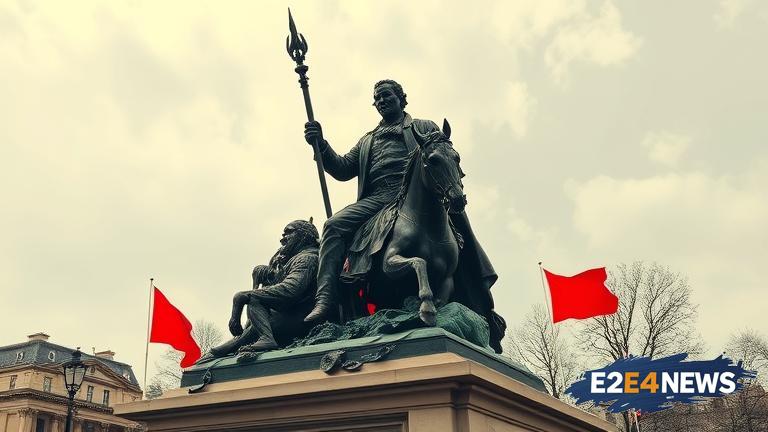The statue of Albert Pike, a prominent figure in the Confederate States of America, was torn down by Black Lives Matter protesters in Washington D.C. The incident occurred amidst widespread demonstrations against racial inequality and police brutality. The protesters targeted the statue, citing Pike’s involvement in the Confederate Army and his alleged ties to white supremacist groups. However, the statue was subsequently reinstalled, sparking outrage among the protesters and reigniting the debate over the removal of Confederate monuments. The reinstallation of the statue was met with criticism from local authorities, who argued that the decision was made without proper consultation or consideration for the community’s concerns. The Black Lives Matter movement has been at the forefront of the protests, demanding justice and equality for African Americans. The movement has gained momentum in recent years, with protests and demonstrations taking place across the United States. The removal of Confederate monuments has become a contentious issue, with some arguing that they represent a painful reminder of the country’s history of slavery and racism. Others argue that the monuments are an important part of the country’s cultural heritage and should be preserved. The debate over the removal of Confederate monuments has been ongoing for years, with some cities and states opting to remove the statues, while others have chosen to leave them in place. The reinstallation of the Albert Pike statue has added fuel to the fire, with many calling for the statue to be removed permanently. The incident has also raised questions about the role of local authorities in addressing the concerns of the community. The Black Lives Matter movement has been successful in bringing attention to the issue of racial inequality, but the reinstallation of the statue has highlighted the challenges that still need to be overcome. The protests have also sparked a wider debate about the legacy of the Confederate States of America and the impact it has had on modern-day society. Many have argued that the Confederate monuments are a symbol of white supremacy and should be removed, while others argue that they are an important part of the country’s history. The reinstallation of the Albert Pike statue has been seen as a setback for the Black Lives Matter movement, but it has also galvanized support for the cause. The incident has highlighted the need for ongoing dialogue and education about the country’s history and the impact it has had on different communities. The removal of Confederate monuments is a complex issue that requires careful consideration and consultation with the community. The Black Lives Matter movement has brought attention to the issue, but it will require sustained effort and commitment to bring about lasting change. The reinstallation of the Albert Pike statue is a reminder that there is still much work to be done to address the legacy of racism and inequality in the United States. The incident has sparked a wider debate about the role of monuments and statues in modern-day society, with many arguing that they should be used to promote education and understanding, rather than to perpetuate harmful ideologies. The Black Lives Matter movement has been successful in bringing attention to the issue of racial inequality, but it will require ongoing effort and commitment to bring about lasting change. The reinstallation of the Albert Pike statue has highlighted the challenges that still need to be overcome, but it has also galvanized support for the cause. The incident has sparked a wider debate about the legacy of the Confederate States of America and the impact it has had on modern-day society. The removal of Confederate monuments is a complex issue that requires careful consideration and consultation with the community. The Black Lives Matter movement has brought attention to the issue, but it will require sustained effort and commitment to bring about lasting change.





